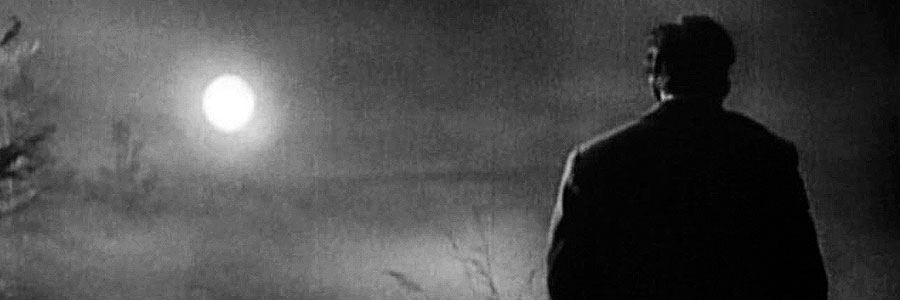
Sunrise: A Story Of Two Humans

SUNRISE: A STORY OF TWO HUMANS (MOVIE)
Fox Film Corporation
Original release: September 23rd, 1927
Running time: 95 minutes
Director: F. W. Murnau
Writers: Carl Mayer, Hermann Sudermann
Cast: George O’Brien, Janet Gaynor, Margaret Livingston
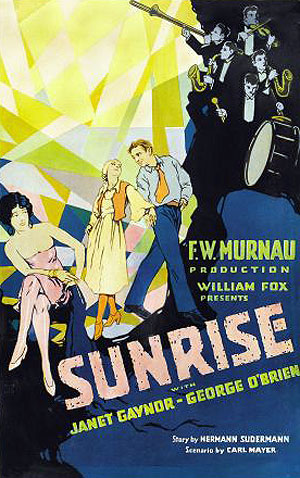
Only eleven people attended the funeral of German filmmaker F.W. Murnau, among them Fritz Lang and Greta Garbo. This muted reverence stalked Murnau throughout his whole life, from an early career depicting rich expressionistic encounters with a distinct German quality to his late Hollywood calling in the 1920s and 30s. He was killed in a car accident in 1931 after a fatal head injury; once again a director whose filmography adopted greater meaning and importance posthumously but survived and enriched the psyche of the film noir and American horror genres, even invading the themes cast in later Italian neorealist film.
To look at German silent film around the time of Murnau’s work, in particular Sunrise: A Story Of Two Humans, it’s interesting to trace how the trajectory of the genre arced from one horizon to the other. Films such as Caligari (1919), Destiny (1921) or indeed Murnau’s own Nosferatu (1922) were depictions of the grotesque – either in social, political or supernatural forms. They were internalised critiques of a German zeitgeist, an ugliness to capitalism, social alienation and power which could manifest itself in hideous guises. Films akin to these allusions often involved the idea of disfigurement: a character may well be left permanently scarred or may have a loved one returned to him or her in an altered form.
Instead, Sunrise tells a much more embracing story, of how we are challenged by temptation, wealth and an alluring edge to danger. To do this, Murnau uses Carl Mayer’s adaptation of A Trip To Tilsit – a short story by Hermann Sudermann. The plot centres on three protagonists, a man and wife whose marriage is threatened when a Woman From the City attempts to seduce the husband. The characters all have names in the original story but Murnau turns them into anonymous figures for Sunrise; simply just Man (George O’Brien), Wife (Janet Gaynor) and Woman (Margaret Livingston). There’s no prize for guessing why he does this, to indeed create an Everyman framework in which the notions of lure and loyalty themselves become more important than who experiences them.
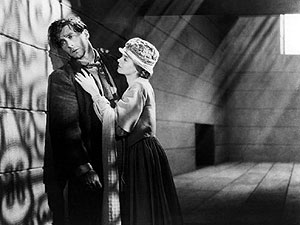
The Woman convinces the Man to essentially elope with her to the city, but the only way of cutting ties with his current life will be to drown his Wife. At first enraged by such a suggestion, he eventually falls under her spell and agrees. He takes his Wife on a boat ride with the intent of pushing her overboard, but when the moment comes he’s unable to kill her. When he rows back ashore, she escapes as the Man follows her and begs for forgiveness. They incidentally take a trip to the city where they witness a marriage ceremony; rekindled by the wedding, the Man and Wife travel through a similar, symbolic remarriage and the Wife absolves her husband’s homicidal tendencies.
The film was inducted into the National Film Registry as a film that is “culturally, historically or aesthetically significant”. The latter of these conditions is where Sunrise’s beauty and true mastery can be uncovered. Murnau had a genius touch for chiaroscuro (strong contrasts between light and dark) and employs it liberally throughout Sunrise. Close-up shots express warm, loving embraces amidst gloomy backdrops or the centre-point is blurred around the edges by darkness. It adds almost a fish-eye perspective into this love triangle, as if peering voyeuristically inside the minds of the film’s characters.
This peeping camera is also given free roam across Murnau’s sets. Just as he had been in previous films, the idea of motion was deeply appealing to him. The boat rides and trips to the 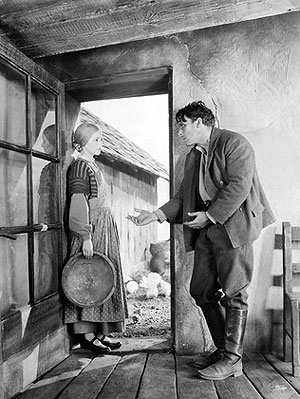 city are constantly framed as a type of mobile mise-en-scène, characters travelling to and from locations while the camera never seems to stop. We take the ease of this for granted today, but bearing in mind how heavy and cumbersome movie cameras were in the 1920s and 30s, it really is a feat of technical and mechanical prowess.
city are constantly framed as a type of mobile mise-en-scène, characters travelling to and from locations while the camera never seems to stop. We take the ease of this for granted today, but bearing in mind how heavy and cumbersome movie cameras were in the 1920s and 30s, it really is a feat of technical and mechanical prowess.
These movements and images are as much as early example of film language as Buster Keaton and Charlie Chaplin were of cinematic slapstick. Murnau was an advocate of storytelling through pictures, rather than relying on intertitles to explain what was going on. Instead he uses a tapestry of gorgeous landscapes and moods to hint at seduction, sex, death and rebirth. These themes are so prevalent throughout the film, yet he seems to effortlessly depict them with straightforward camerawork.
It still remains one of the most beautiful silent films of all time, certainly aided by its expressionistic roots, but actually it’s obvious that Hollywood was very fortunate to have produced Murnau’s work. Despite the fact that Sunrise wasn’t a huge bestseller (in fairness it was competing with the likes of Keaton’s The General) it helped to ensure the survival of silent film before technology eventually conquered it and introduced talkies. It’s infinitely rich, soulful and stirring, more so than many romantic films, and further safeguarded Murnau’s place in the triumphant realm of early cinema.
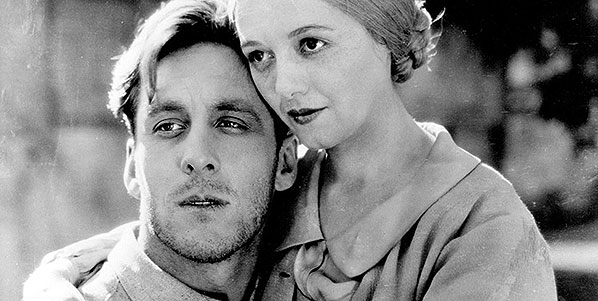

Andrew Latimer
Andrew started out writing theatre reviews in Edinburgh while studying for a degree in Arts Journalism. His interest in film came after attending several festivals across the UK. In particular, he discovered a love of documentary cinema, specifically the work of Werner Herzog and Errol Morris.
Andrew loves films which investigate stories of undocumented struggle and solitude. Some favourite docs include Grizzly Man, King of Kong, 5 Broken Cameras, L'encerclement, Inside Job and Shoah.
Andrew runs a Scottish arts review website, TVBomb, and you can follow him on Twitter at @ajlatimer.
© 2022 STATIC MASS EMPORIUM . All Rights Reserved. Powered by METATEMPUS | creative.timeless.personal. | DISCLAIMER, TERMS & CONDITIONS
HOME | ABOUT | CONTACT | TWITTER | GOOGLE+ | FACEBOOK | TUMBLR | YOUTUBE | RSS FEED
CINEMA REVIEWS | BLU-RAY & DVD | THE EMPORIUM | DOCUMENTARIES | WORLD CINEMA | CULT MOVIES | INDIAN CINEMA | EARLY CINEMA
MOVIE CLASSICS | DECONSTRUCTING CINEMA | SOUNDTRACKS | INTERVIEWS | THE DIRECTOR’S CHAIR | JAPANESE CINEMA





